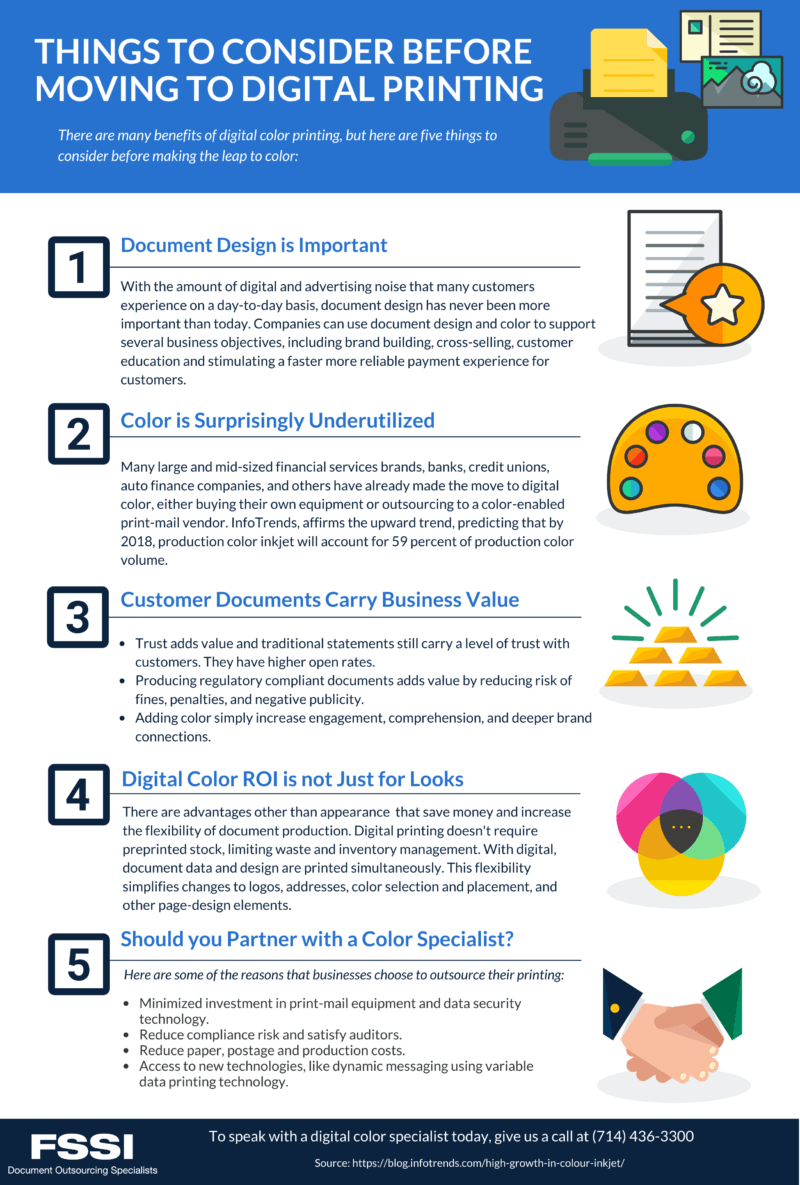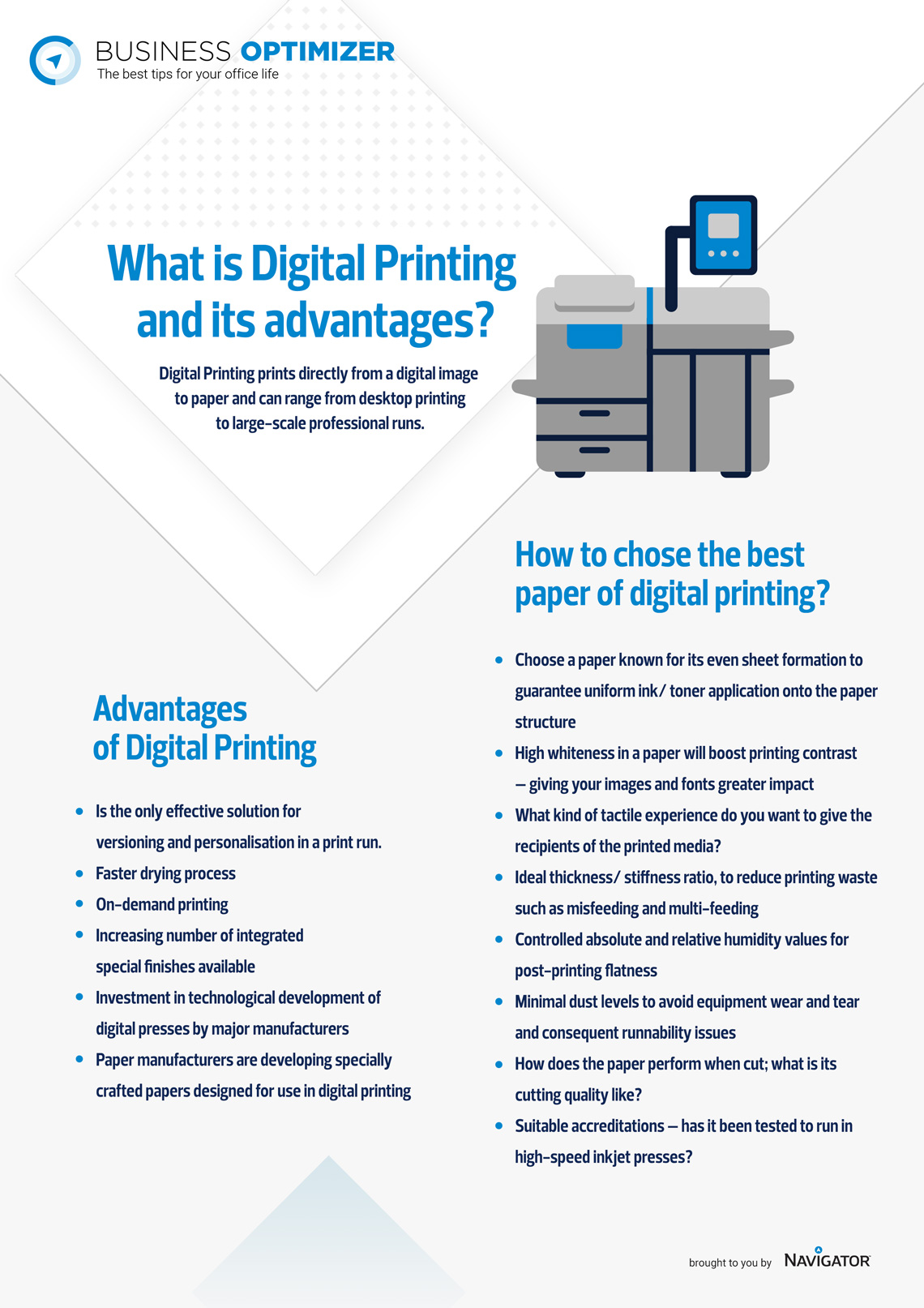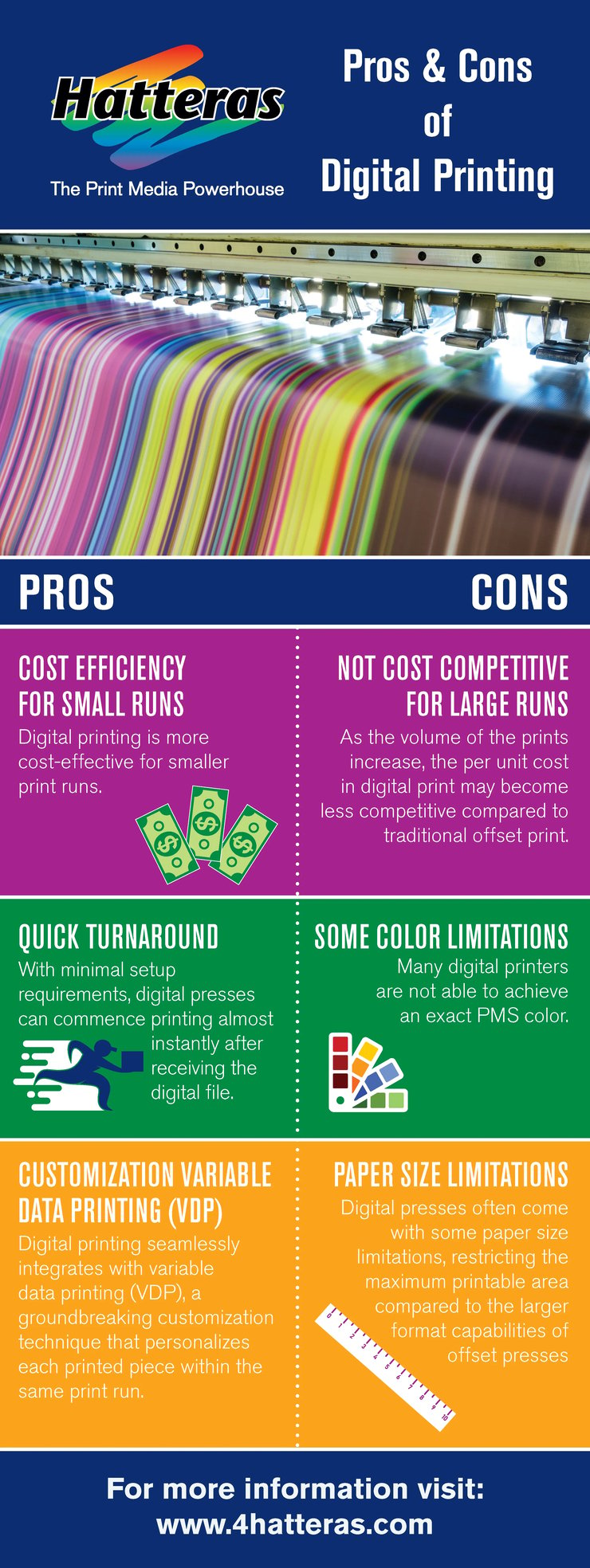How Digital Printing can Save You Time, Stress, and Money.
Table of ContentsAbout Digital PrintingThe 5-Minute Rule for Digital PrintingSome Known Details About Digital Printing Examine This Report on Digital PrintingThe 3-Minute Rule for Digital PrintingGet This Report about Digital Printing
Variable information printing, such as direct mail with customized codes and addresses, is ideally suited for digital printing. Digital fast printing just requires four steps of design, testimonial, printing and binding to obtain every little thing done. Digital fast printing has an unparalleled advantage: print on demand.According to PMMI, electronic printing enables brands and suppliers to respond quickly to consumer demands while enhancing the supply chain, reducing warehousing price and waste, and appreciating faster time to market. That all noises fantastic, but just how does this technology do all that? The significant differentiator of these innovations is that there are no set-up charges and no plates with digital printing.
How Digital Printing can Save You Time, Stress, and Money.
According to Wikipedia, the best difference between digital printing and traditional techniques such as lithography, flexography, gravure, or letterpress - Digital Printing is that there is no demand to replace printing plates in electronic printing, whereas in these analog printing techniques home plates are repeatedly changed. This results in quicker turnaround time and decreases cost when making use of digital printing.
Rapid production means getting your item to market faster. It likewise indicates it's easier and faster to make changes in the future, when you alter a dish, include a SKU, or produce seasonal product packaging. Digital printing is very flexible, so it's easy to make changes to the package design quickly. It all goes back to the plates.
Much more stock can suggest even more waste in the future. With traditional printing techniques, short-run printing is simply not feasible. Due to the fact that an excellent layout can make or damage your item, digital printing regularly produces top quality, clear and colorful graphics each time. Digital printing on flexible bags includes the brilliant, lively, and specific graphics that almost bid customers to connect and touch them.
Digital printing is the procedure of printing digital-based pictures directly onto a selection of media substratums. There is no requirement for a printing plate, unlike with offset printing. Digital documents such as PDFs or desktop computer publishing data can be sent straight to the digital printing machine to print theoretically, picture paper, canvas, material, synthetics, cardstock and other substratums.
4 Easy Facts About Digital Printing Explained
According to PMMI, visit our website electronic printing enables brands and manufacturers to respond rapidly to consumer needs while enhancing the supply chain, reducing warehousing expense and waste, and taking pleasure in faster time to market. That all sounds excellent, but exactly how does this modern technology do all that? The major differentiator of these innovations is that there are no set up charges and no plates with electronic printing.
This results in quicker turn-around time and lowers expense when making use of digital printing.

Digital Printing Fundamentals Explained
A lot more inventory can indicate more waste down the road. With traditional printing techniques, short-run printing is just not possible. Because a wonderful layout can click for source make or damage your item, digital printing regularly produces premium, clear and vibrant graphics each time. Digital printing on versatile bags includes the bright, vivid, and precise graphics that virtually beckon customers to get to out and touch them.

According to PMMI, digital printing allows brand names and suppliers to react rapidly to customer needs while boosting the supply chain, lowering helpful site warehousing expense and waste, and taking pleasure in faster time to market. That all noises terrific, but how does this modern technology do all that? The significant differentiator of these modern technologies is that there are no set up charges and no plates with electronic printing.
Excitement About Digital Printing
According to Wikipedia, the best difference between electronic printing and traditional approaches such as lithography, flexography, gravure, or letterpress is that there is no demand to change printing plates in electronic printing, whereas in these analog printing methods home plates are continuously replaced. This leads to quicker turn-around time and reduces price when using electronic printing.
Digital printing is very adaptable, so it's simple to make changes to the bundle design promptly. It all goes back to the plates.

The 20-Second Trick For Digital Printing
Digital printing is the process of printing digital-based images directly onto a range of media substratums. There is no demand for a printing plate, unlike with offset printing. Digital files such as PDFs or desktop computer publishing data can be sent out straight to the electronic printing press to publish theoretically, image paper, canvas, textile, synthetics, cardstock and other substratums.